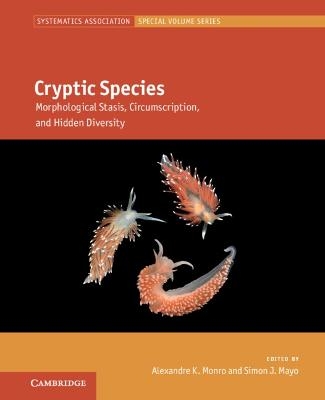
Cryptic Species
Cambridge University Press (Verlag)
978-1-316-51364-4 (ISBN)
Cryptic species are organisms which look identical, but which represent distinct evolutionary lineages. They are an emerging trend in organismal biology across all groups, from flatworms, insects, amphibians, primates, to vascular plants. This book critically evaluates the phenomenon of cryptic species and demonstrates how they can play a valuable role in improving our understanding of evolution, in particular of morphological stasis. It also explores how the recognition of cryptic species is intrinsically linked to the so-called 'species problem', the lack of a unifying species concept in biology, and suggests alternative approaches. Bringing together a range of perspectives from practicing taxonomists, the book presents case studies of cryptic species across a range of animal and plant groups. It will be an invaluable text for all biologists interested in species and their delimitation, definition, and purpose, including undergraduate and graduate students and researchers.
Alexandre K. Monro is a Research Leader at Royal Botanic Gardens, Kew, London, UK. He is a taxonomist who has specialised in nettles and the generation of biological collections and their application to taxonomy and conservation. He has co-authored five field guides, over 90 peer-reviewed scientific papers, and made more than 16,000 biological collections. He is a council member of the Systematics Association. Simon J. Mayo is an Honorary Research Associate at Royal Botanic Gardens, Kew, London, UK. He is a taxonomist specializing in aroids and Brazilian flora. He has authored 112 peer-reviewed papers, 24 flora accounts and seven books on Araceae, Brazilian flora, monocot evolution, and computational botany. His current focus is on algorithmic delimitation and the cognitive basis of taxonomic species.
List of Contributors; 1. Introduction Alexandre K. Monro; 2. Cryptic species: A product of the paradigm difference between taxonomic and evolutionary species Simon J. Mayo; 3. Species circumscription in cryptic clades: A Nihilist's view Richard M. Bateman; 4. Multilevel organismal diversity in an ontogenetic framework as a solution for the species concept Alexander Martynov and Tatiana Korshunova; 5. Diagnosability and cryptic nodes in Angiosperms: A case study from Ipomoea Pablo Muñoz-Rodríguez, John. R. I. Wood and Robert W. Scotland; 6. Connecting micro- and macro-evolutionary research – extant cryptic species as systems to understand macro-evolutionary stasis Torsten H. Struck and José Cerca; 7. Coexisting cryptic species as a model system in integrative taxonomy Cene Fišer and Klemen Koselj; 8. Non-monophyletic species are common in plants: An ecological evolutionary perspective Matt Lavin and R. Toby Pennington; 9. Guerrilla taxonomy and discriminating cryptic species – is quick also dirty? Paul H. Williams; 10. Cryptic lineages among Seychelles herpetofauna Jim Labisko, Simon T. Maddock, Sara Rocha, David J. Gower; 11. Cryptic diversity in European terrestrial flatworms of the genus Microplana (Platyhelminthes, Tricladida, Geoplanidae) Marta Álvarez-Presas, Eduardo Mateos, Ronald Sluys and Marta Riutort.
| Erscheinungsdatum | 30.08.2022 |
|---|---|
| Reihe/Serie | Systematics Association Special Volume Series |
| Zusatzinfo | Worked examples or Exercises; 75 Line drawings, black and white |
| Verlagsort | Cambridge |
| Sprache | englisch |
| Maße | 210 x 262 mm |
| Gewicht | 890 g |
| Themenwelt | Naturwissenschaften ► Biologie ► Evolution |
| Naturwissenschaften ► Biologie ► Ökologie / Naturschutz | |
| ISBN-10 | 1-316-51364-5 / 1316513645 |
| ISBN-13 | 978-1-316-51364-4 / 9781316513644 |
| Zustand | Neuware |
| Informationen gemäß Produktsicherheitsverordnung (GPSR) | |
| Haben Sie eine Frage zum Produkt? |
aus dem Bereich


